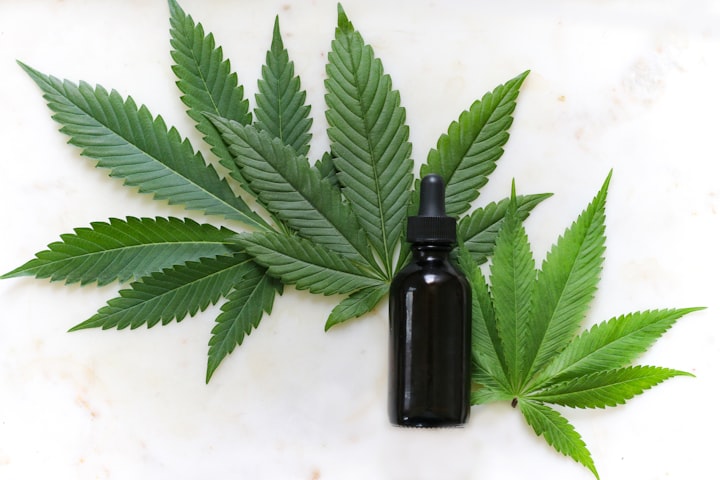Increased Risk of Injuries and Accidents on Cannabis
Community Health Assessment

Introduction
The use of cannabis has grown significantly in Alberta, more so since the legalization of all its products on Oct 17, 2019 (Government of Alberta, 2023). Tetrahydrocannabinol (THC) is psychoactive ingredient found in cannabis which can cause impairment, whether used therapeutically or recreationally. My reference to cannabis throughout this paper includes any consumed form such as smoking, vaping, edibles, oils, extracts, lozenges, etc. Where commercial selling is concerned there are an abundant number of retail stores. As an example, according to Google there are over 20 cannabis stores in Mill Woods, the south/southeast part of Edmonton, where the population of adults is less than 90,000 (Alberta Health, 2022). Looking at medical centers in the area for comparison there are about 20. It is just as easy to access a store selling cannabis than it is a medical center. Mill Woods is a culturally diverse community with about 50% being immigrants with a majority from Asia (Statistics Canada, 2016). Mill Woods is an area with various age, income, and education levels.
Data Collection
Data collection I primarily used to conduct use and severity of use of cannabis within the Mill Woods community was an online poll with a survey. Benefits of an online poll and survey included ease of labor, easy distribution, and cost efficiency (Stanhope et al., 2022). The survey consisted of ten questions and was easy for applicants to fill out but remain anonymous. Survey questions included how much cannabis was consumed, in what form, and how often. The question of whether cannabis was taken for medicinal or recreational purposes was asked along with whether the individual was more likely to partake in risk-taking activities such as driving, sports, partying, or overeating. A poll was also conducted, which had participants like the Facebook post if they do not consume cannabis and heart the post if they do. This was intended to capture more information knowing many would easily click a like or heart than take the time to participate in a survey. I found a lack of participation in the poll, most likely, in fear of judgement from others, as it was not anonymous. Although the survey was anonymous, the postal code did not work as intended as the survey engine I choose to use turned out to be American so only worked with a ZIP code I later found out. This most likely caused many people not to complete the survey thinking it would not work as intended, hence I did not end up with as many responses as wished for. But of the group that filled in the survey I knew they most likely resided in the Mill Woods area as the surveys were posted in differing Mill Wood Community Facebook groups. Even with surveys there is the elemental of error in terms of reading and responding to the question whether accidental or intentional so the responses and final analyses can not be an absolute. Although surveys bring the benefit of ease and cost efficiency, they potentially can reach many people whom I could not access (Stanhope et al., 2022). The survey was quick and easy in hopes many would take the few minutes to complete, but having the online survey left out any individuals not involved in these Facebook groups and individuals who do not have access to Facebook or the internet. However, with the answers I received and what I perceived form what I hear and talk to others about, the results seemed consistent for what I believe needs to be paid attention to in terms of cannabis in this area. Besides the poll and survey, I did some research including internet browsing, data collection, through police, AHS, government, and cannabis related sites.
Community Health Assessment and Concerns
The new widespread and increased use of cannabis has brought health concerns to light especially within Mill Woods. Cannabis is another product that needs to be weighed per individual whether the risk outweighs the benefits or vice versa. Cannabis can be used for good especially if for medicinal reasons such as pain, reduction of inflammation, anxiety, and nausea. But alongside Cannabis can cause harm such as changing societal norms, teenage pregnancies, brain development of adolescents, accident and impaired related injuries/activities, mental health issues (exacerbation of mental illness, anxiety, dependency, and addiction), performance ability (loss of concentration and decision making), and respiratory issues (Government of Canada, 2021). One activity that comes to light, creating a priority that is definite, within Mill Woods is the fact cannabis use increases injuries and accidents due to impairment. THC causes impairment and increased risk if driving, operating machinery, participating in contact sports or any new or risky event (Fischer et al., 2019). There has been a marked increase of hospitalizations in the past years from psychoactive drugs, in which cannabis plays a part in (Alberta Health, 2022). Cannabis causes impairment so driving or operating machinery becomes a challenge and a problem. There has been a case of cannabis impaired driving death in the Mill Woods Community (McEwan, 2019). One should not operate a motor vehicle or equipment of any kind while on cannabis. Cannabis should not be taken when at work. Awareness, concentration, memory, and decision making can all be altered by cannabis causing an increased risk in injury or death. If an individual partakes in riskier activities, whether planned or unplanned, while experiencing the effects of Cannabis such as contact sports or events there can be an increased chance of injury. Lack of coordination and cognition leads to more injuries. This risk taking or accidents from impairment may not only cause harm to oneself, but to others. As such may be the case in motor vehicles or other equipment use but with situations such as watching children or interacting with others (Fischer et al., 2019).
Another concern about the use of Cannabis as it is for any recreational drug is the source. Cannabis can be purchased legally where it is regulated with safeguards making the substance safer. However, one can still buy unregulated cannabis, but this needs to be avoided, as the limits and ingredients in these products can vary causing much more harm than good. The benefit of legalizing Cannabis are regulations that limit not only how much one individual can purchase at a time but regulating how much THC is in any cannabis product. However, as with anything that can be consumed, too much consumption is on the consumer themselves.
There are ways to get information on the use of cannabis, such as Alberta Health Services will be able to connect one with a nurse to question about the beneficial and harmful uses through programs such as community health centers, calling 811, or even your closest medical center where one can speak to a nurse or your doctor. Also, there are support programs for the use of cannabis, if overuse is a concern, such as Marijuana (cannabis) anonymous (Canadian Mental Health Association, 2023). To participate in this group the only requirement is the want to stop using cannabis. There are currently no in person Marijuana Anonymous Groups in the Mill Woods Community as evidenced by a Google search, but there are online groups. The need to access a group locally, in person, is a need that the Mill Woods community should invest in.
Whether the use of Cannabis is for therapeutic or recreational reasons the person partaking needs to be aware of the events and obligations they have. Driving while on cannabis is illegal. However, other activities need to be regulated and safe guarded individually. One needs to be aware of their personal limits and consume cannabis in safe places without threat or harm of partaking in dangerous activities. One also needs to be aware of others when partaking in Cannabis consumption such as not caring for children or others while consuming cannabis due to impaired decision making and coordination. Risky events, whether sports or other activities as simple as being on a ladder or cleaning a wet soapy shower should be avoided.
There is an abundance of cannabis retailers in Mill Woods, as well as multiple online venues, so access to cannabis is simple if one is of legal age with Identification. Legalizing cannabis has allowed the drug to be regulated but has also introduced many more consumers to the product, making it a mainstream source of recreation. But, on the other end, cannabis and its use has come to aide many individuals for medicinal purposes, with or without a medical certification. Acceptance of consuming cannabis is causing an increase of use as well becoming a societal norm. Consumption of cannabis is becoming more widespread in activities with a lot of people such as parties and concert events. Therefore, the expected injuries and accidents are bound to increase (Alberta Health, 2022). To help curb this increase primary intervention is most important (Stanhope et al., 2022). Teaching for the prevention of risks associated with Cannabis saves both individuals (as can be productive with work) and the community (economy and healthcare costs) in monetary expenses. Preventing injuries and accidents can save lives. As a community the recognition of Cannabis use is needed, and the stigma needs to be lifted so one can request help if needed. The goal of primary intervention in the use of cannabis regarding injuries and accidents is not to stop Cannabis use, but to use cannabis safely. Teaching safe use of Cannabis may be beneficial to an individual and hence the community. I do not believe the Mill Woods community is aware of the risks involved, and the growing use of cannabis. One such project which will help deter and curb driving impaired due to cannabis as relatively recently, the Edmonton Police Service now has access to Draeger DrugTest 5000s (Edmonton Police Service, 2019). This test can test the saliva of the driver to check for the use of many drugs, including cannabis.
Priority Goals
As a healthcare provider there is a need for goals to curb the effects cannabis may have on the community. These goals will go hand in hand with primary intervention. A short-term goal would be to reach as many members as possible whom consume cannabis with information regarding safe consumption in the next couple of weeks at cannabis stores to curb dangers or injuries and accidents. A long-term goal would be to reduce the incidences of accident-related hospital injuries due to the consumption of cannabis in the next year with focused but widespread education. This is necessary as incidences have reportedly gone up due to legalization of, hence, increased use of Cannabis (Fischer, et al., 2019).
Teaching Resource and Strategies
Teaching resources I would use to teach are brochures, both in print and media form. Media form may be better suited for the younger generation or those who like online interaction. While still having print brochures available for those without internet access and those who prefer a hard copy. I plan on having these brochures available at all Cannabis stores that allow this, as well as local medical clinics, police, city, and community services/centers that allow. It is education in how to use cannabis responsibly, so I anticipate the acceptance where brochures are located to be high. I will have links for my online brochure on Facebook where it can be shared and viewed by many as well as links on the brochure for those to access the online version easily. I would like my brochure to highlight places and numbers anyone can go to or ask questions, even anonymously to receive more information. I hope that the health literacy is at an adequate level that many individuals will understand the risks that come with cannabis consumption and not be afraid of the stigma to talk about it if they so wish.
I hope to affect the affective learning domain when people see and read the brochure I produce. I want to leave a work number and email on the brochure for individuals to be able to call to let me know how they feel about anything they just read or if they have any thoughts regarding cannabis use. I also will be able to get feedback from the businesses where the brochures are placed, such as were they popular, did individuals say anything about them, and were those comments positive or negative. The cognitive learning domain will be most utilized though in the use of the brochure, as whether individuals, users or not of cannabis, I hope not only take the time to read the brochure, but to understand it and question it and have the realization if they are following good or bad habits in regard to their consumption of cannabis (Potter et al., 2019). If they are using cannabis responsibly. There can be a stigma with cannabis use so allowing people to self-learn may be positive if health literacy is met. The brochures, both print and the ones circulating within media will reach individuals of all ages, income, and education levels. The way to know if my strategies are working are to see if there is a decrease in activity of impaired driving and to see if there is a decrease in injury related medical visits regarding cannabis consumption.
Evaluation
Evaluation of goals are needed to see if the brochures had any effect or if another program or idea needs to arise to help curb the issue of preventable risks while on cannabis. I need to evaluate my teaching since the beginning but also after the goals have had time to show some success (Stanhope et al., 2022). I hope with questions asked in my brochure it will bring about more affect and individuals will ask themselves these questions prompting self learning and thinking about their experiences, past and present and future with cannabis. My short-term goal can be evaluated by talking to businesses to see if the traffic of these brochures were high. It could be noticing if I see the brochures on the ground outside of stores being littered with rather than read. I can take note of any phone calls or emails received as if none received maybe the intention was not there. Or I could see the circulation of the online brochure to see how many people and where this information has reached in that media. For my long-term goal, I would need to look at the statistics in the next year to see if they have improved or not for injuries and accidents due to harmful Cannabis use.
Conclusion
The risks while consuming cannabis can be high increasing accidents and injuries, but with responsibility cannabis can be consumed for both therapeutic and recreational use. A job as healthcare professionals and the community is to increase the health literacy of Mill Woods to include responsible cannabis use.






Comments
There are no comments for this story
Be the first to respond and start the conversation.